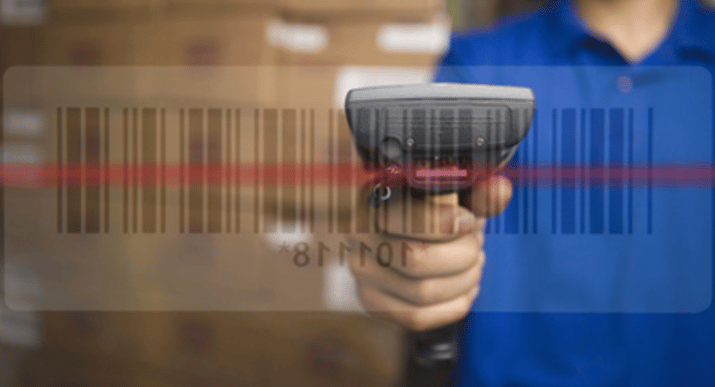Even though compliance is the primary reason most pharma companies are implementing serialization, there is a wealth of business value beyond it. DSCSA compliance opens a window of opportunities for businesses, and forward-thinking leaders are exploring them now.
As of November 2017, prescription drugs sold on the US market must be serialized. This means pharma companies must have an operational serialization solution by that time. By 2023, the industry must enable data exchange and full unit-level traceability.
The Drug Supply Chain Security Act creates significant roadblocks for businesses, as it takes a large-scale strategy to reach full compliance. Planning, implementation, mitigating disruptions across the enterprise and the pharmaceutical supply chain are just the formal tip of the iceberg. Below, there is the significant investment in a myriad of solutions and adjustments. From software and hardware to staff training, and development of new processes that ensure compliant reporting, and serialization.
#1. Capturing Data
Even though DSCSA-mandated labeling and reporting requirements are top of mind, there are opportunities pharma companies can explore to optimize processes and boost revenue. Assessing short-term compliance goals and long-term ones such as scalability, rich data, and its value for business intelligence can drive substantial business value.
The captured data holds the key to the future value generation that goes beyond DSCSA compliance and reporting to your partners in the supply chain. You can use it to support an investigation in case the supply chain gets compromised. You can tap into it to simplify processing of ad-hoc queries, and to support your routine operations. You can use it to analyze which lines perform the best, and replicate those efficiencies across the operations.
The data about a product’s critical tracking events is money – you just have to convert it into efficiencies, and improvements. That said, consider capturing the data in the full format. The serial numbers, the date and time complete with the time zone, the location, and the business context. The latter can include any relevant details, such as product condition, or associated transactions.
Beyond the DSCSA-mandated commissioning, packing, and shipping, consider capturing sampling, inspection, exception processing, reverse logistics, unpacking, and repacking. In other words, consider where you could benefit from greater visibility into the processes.
#2. Providing Data
Drug manufacturers, distributors, contract manufacturers, third-party logistics providers and repackagers – all must contribute their share to ensuring the products they operate are traceable. Each one of the trading partners expects to receive tracking events data from the manufacturers, which in its turn needs data from a supplier.
So, the goal here is to have a clear idea of what data each partner needs. The roadblock could be that not all of your partners may have a good idea of their data requirements. Regardless, make sure to get the details that will save you a headache in the future. You may want to inquire with your partners about:
- The critical tracking-event data they need – ensure you capture it; if not, adjust accordingly.
- The master data they need you to sync with their systems – item attributes such as name, dose, and dosage form, required party, location, etc.
- Shared use of the same identifiers for product identification and party/location identification– i.e. SGTIN, GLN.
#3. Interoperability
Providing your partners with the right data, and receiving the data you need, is by far not the only focus area you need to clear with your trading partners. Technical issues usually tend to be the most expensive to troubleshoot, and interoperability of your solution and your partners’ solution is paramount. With the deadline impending, there is little time left to test and ensure your IT systems and those of your partners can inter-operate reliably when DSCSA prime time comes.
When you need to interface with multiple partners, there must be a consistent acceptance of industry standards in some critical aspects, such as:
- The format of data your partners will send and expect to receive (GS1 EPCIS and the GS1 US guideline for EPCIS).
- The data exchange mechanism your partners intend to use and their security requirements (Secure File Transfer Protocol, Applicability Statement 2), their advantages and disadvantages for your operations.
Choosing Vendors
Determining vendor evaluation criteria is key to addressing your business requirements. For example, will the vendor ensure to provide the right data based on your business processes, and if yes, have they done so for other companies? Does the vendor comply with the GS1 US guideline for the use of EPCIS in the US drug supply chain?
Now that everyone is pressed for time with their serialization implementation, you need to ensure the vendor has sufficient resources (support, technical, engineering capacity) to cater to your specific needs adequately. In other words, are their resources stretched thin? Of note is whether the vendor is already working with any of your trading partners, and the interoperability level they can ensure.
Final Words
The right serialization and traceability solution offers a wealth of benefits beyond DSCSA compliance. According to a recent KPMG survey, more than 70% of polled companies “plan to use serialization data to enhance business processes.”
While companies are investing tens and even hundreds of millions of dollars to reach end-to-end traceability of drugs within the US supply chain by 2023, it makes all the sense to focus on the long-term value potential of all their implemented solutions.
About TrackTraceRx Suite
Other solutions on the market today are totally fragmented by only providing one piece of the puzzle. Pharmaceutical companies today are stuck subscribing to multiple services, accessing different companies for support and paying thousands of dollars to integrate different systems. The TrackTraceRx Suite is a game changer by combining the TrackTraceRx Traceability Solution, a ERP, and a Commerce Platform completely integrated out of the box. This eliminates having to deal with multiple support, feature services and integration costs.


COMMENTS